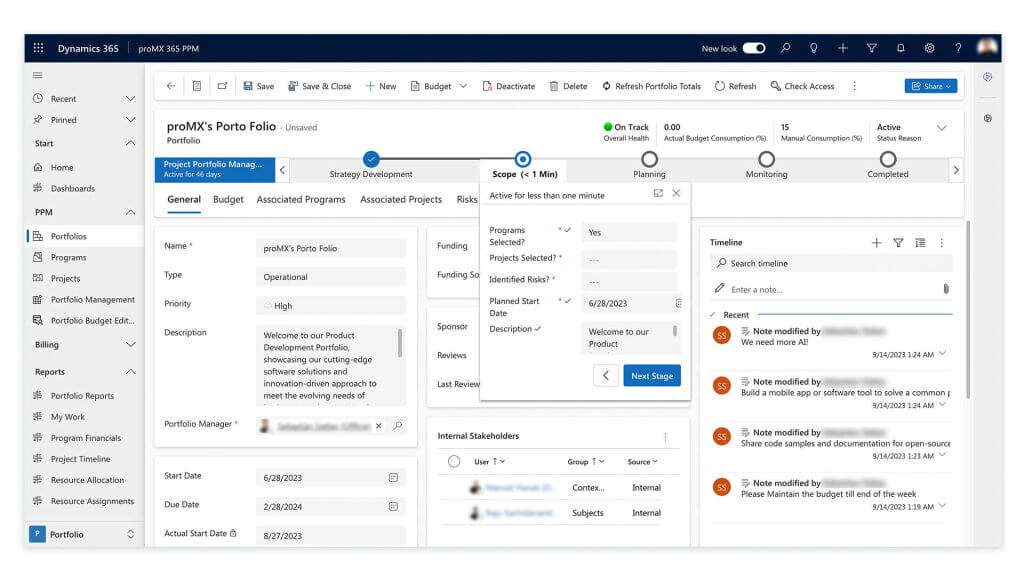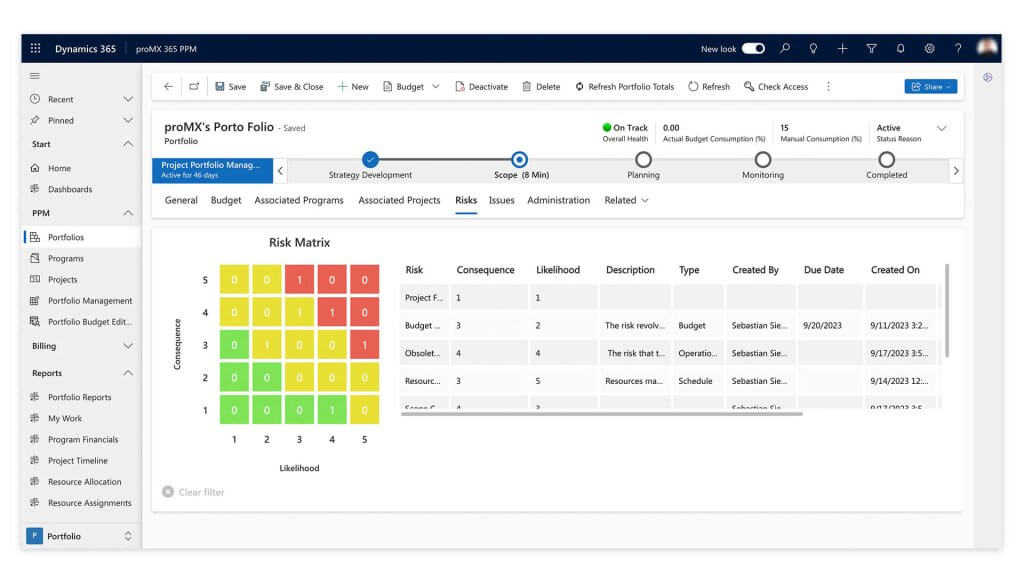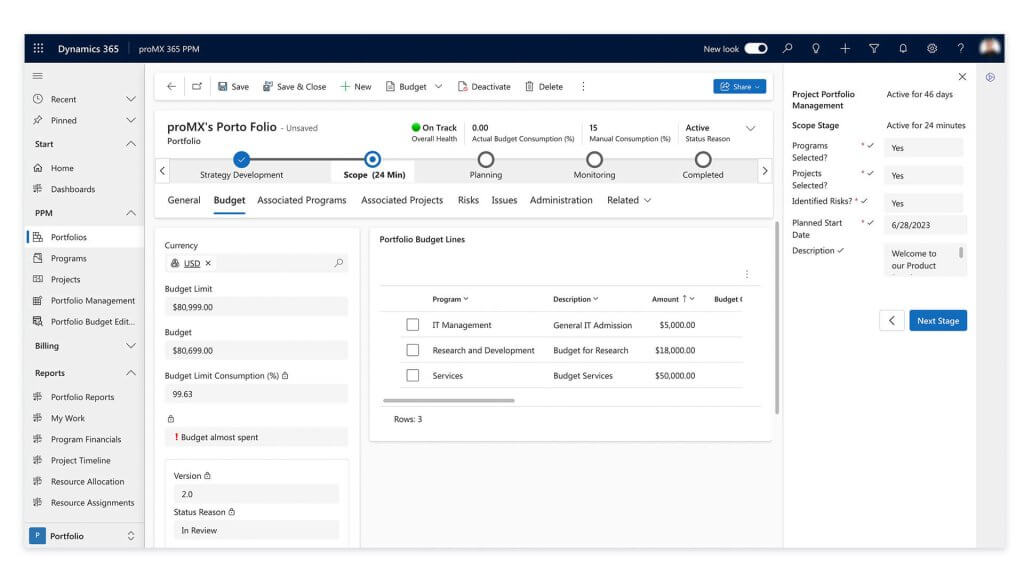
Project Portfolio Management: 5 challenges and how to overcome them
Without musical direction, an orchestral performance would be a chaotic mess instead of a harmonious concert. Conductors introduce the piece at the beginning of the concert, show the musicians their cues, guide the work through its musical development, and finally bring it to a close.
In Project Portfolio Management, the situation is similar: the task is not to coordinate a single project, but rather several programs, projects, and resources simultaneously across the entire company. Ideally, these should work in harmony with each other instead of hindering one another.
In practice, this is not always the case. Companies often struggle with prioritization, a lack of data, poor visualization, and many other factors. Fortunately, all these challenges can be overcome, especially with the support of software.
In this article, we will show you the five biggest challenges in project portfolio management, and how to overcome them.
1. Prioritizing projects
Challenge: Which projects are the most important? The ones that align with the company’s goals, of course. However, in practice, this is often more challenging than it sounds because multiple projects compete with each other.
Solution: Establish clear criteria for prioritizing projects. These criteria should be based, among other things, on your company’s strategic goals, a risk assessment, and the expected return on investment (ROI). Coordinate with the key stakeholders of the individual projects in regular portfolio reviews, and ensure that a project still holds the priority you’ve previously set – and re-prioritize if necessary.
2. Allocating resources and capacity planning
Challenge: Projects are only successful if the resources allocated to them are precisely those that can successfully complete individual work packages. Project quality suffers if this is not the case, and unqualified employees are selected instead.
It is also problematic to expect 100 % capacity from resources. Nobody is productive every minute of their working time. In fact, on average, people are active for about 80 % of their working time. So, if you want to complete projects on time, keep that in mind.
Solution: A comprehensive overview of resources using a software solution can help. An up-to-date understanding of employee capacities and qualifications supports resource and project managers. A professional project management solution also facilitates communication.
You can receive support from artificial intelligence (AI), which can, for example, identify the person with the availability and the right qualifications for a project in a matter of seconds.
Furthermore, resources can be allocated and planned most sensibly if you know which projects are genuinely important and take priority. You see, it’s all interconnected!

3. Risk management
Challenge: Projects are exposed to all kinds of risks that may not be immediately apparent. Therefore, it is even more crucial to identify them in order to prevent a chain reaction – as one project delay could affect the next one in the portfolio. Risks can be financial, like having a budget that is either too low or gets depleted too quickly; technical, such as software failing to deliver on its promises; or market-related, like when an industry or the overall economy is heading towards a recession.
Solution: Fortunately, software can assist in identifying and assessing risks and integrating them into project planning. Document all potential risks right before the project commences and devise specific countermeasures for various types of risks. It also makes sense to address risks as the project progresses. New risks may emerge, or the likelihood of a risk may change.

Are you managing multiple programs and projects in your company simultaneously, but your current software solution can’t keep up, and you’re slowly but surely losing track? If you’re struggling with prioritizing your projects, allocating your resources wisely, or lacking insight into project progress, you should get to know proMX 365 Project Portfolio Management.
4. Change management and communication
Challenge: How do individual projects in the portfolio bring the company closer to its goal? Clear communication is just as important for stakeholders in projects as it is for all other project participants. Especially if you don’t yet have project portfolio management software, you should adequately prepare your company’s employees for the upcoming changes. And even after the introduction of a new solution, it is crucial that communication between all departments runs smoothly.
Solution: Regular status updates, milestone achievements, changes in project priorities, adjustments to project duration – all of this information should be included in a comprehensive communication plan. This will help ensure that everyone is on the same page. Organize workshops if necessary.
5. Analyzing data and making informed decisions
Challenge: What is the outcome of a project? This can be measured in a number of ways: Results that can’t be directly quantified in monetary terms, for example; short-term and long-term benefits and how they balance out; results of one project that wouldn’t have been possible without another; importance in relation to business goals; and so on. You see, the list is extensive.
Solution: Similar to prioritizing projects at the outset, it makes sense to establish agreed-upon criteria for measurement. Key performance indicators (KPIs) that align with the company’s goals provide you with valuable data. These can be visualized in the right software to show you the progress of your projects, whether you need to adjust the budget or allocate resources differently, and help you make data-driven decisions.


Conclusion
The challenges in project portfolio management may seem daunting, but with the right strategies and tools, you can easily master them. Here are the key takeaways to navigate these challenges effectively:
- Prioritizing projects: Establish clear criteria based on strategic goals, risk assessment, and ROI. Regular portfolio reviews with key stakeholders ensure alignment and allow for timely re-prioritization.
- Allocating resources and capacity planning: Leverage software solutions for comprehensive resource management. Understand employee capacities and qualifications to make informed decisions. AI can provide invaluable support in identifying the right fit for each project.
- Risk management: Anticipate and document potential risks. Utilize software for risk assessment and integration into project planning. Address risks proactively as projects progress to prevent chain reactions.
- Change management and communication: Develop a robust communication plan, encompassing status updates, milestone achievements, and project adjustments. Ensure all stakeholders are well-informed to navigate changes seamlessly.
- Analyzing data and making informed decisions: Define agreed-upon criteria and KPIs aligned with business goals. Leverage software to visualize project progress, enabling data-driven decisions on resource allocation, budget adjustments, and overall project value.
Contact the experts at proMX to learn more about proMX 365 Project Portfolio Management, about Dynamics 365, and make sure to join us for upcoming events!










